American Empire Killed the Prospect of Peace
Military officials have a vision of endless war that will keep the national security state well funded—at least until our empire collapses.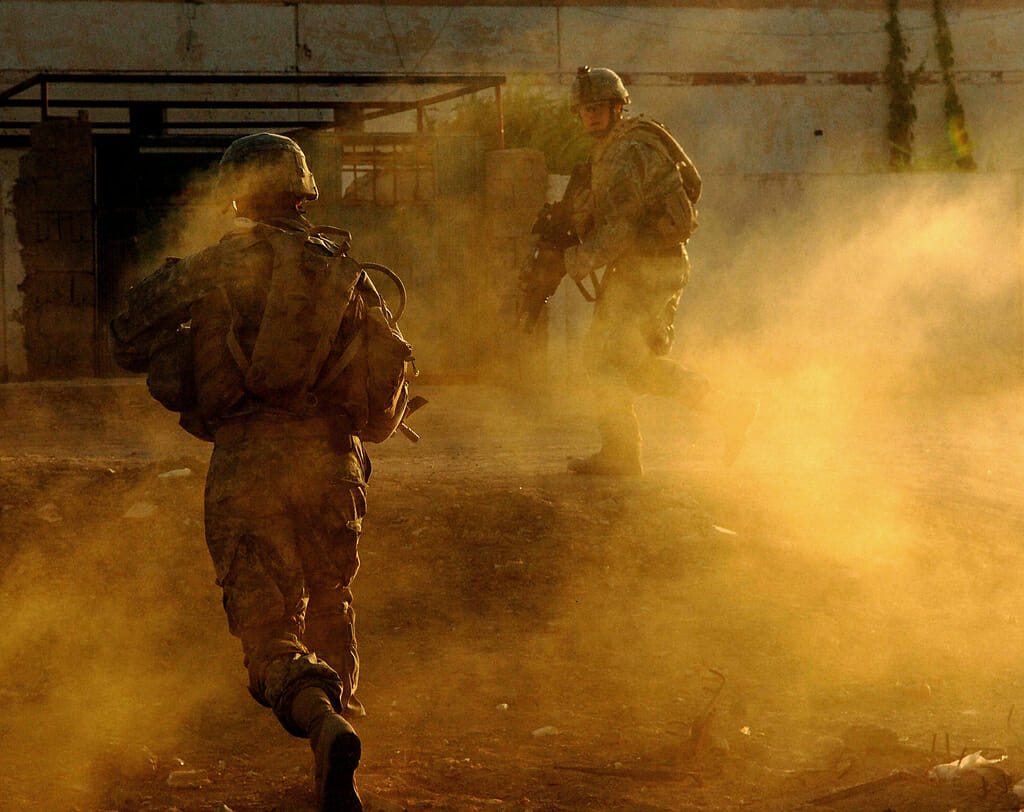 Tech. Sgt. Jeremy T. Lock / U.S. Air Force
Tech. Sgt. Jeremy T. Lock / U.S. Air Force
“Veni, Vidi, Vici,” boasted Julius Caesar, one of history’s great military captains. “I came, I saw, I conquered.”
Then-Secretary of State Hillary Clinton echoed that famed saying when summing up the Obama administration’s military intervention in Libya in 2011 — with a small alteration. “We came, we saw, he died,” she said with a laugh about the killing of Muammar Gaddafi, that country’s autocratic leader. Note what she left out, though: the “vici” or victory part. And how right she was to do so, since Washington’s invasions, occupations, and interventions in Afghanistan, Iraq, Libya, and elsewhere in this century have never produced anything faintly like a single decisive and lasting victory.
“Failure is not an option” was the stirring 1995 movie catchphrase for the dramatic 1970 rescue of the Apollo 13 moon mission and crew, but were such a movie to be made about America’s wars and their less-than-vici-esque results today, the phrase would have to be corrected in Clintonian fashion to read “We came, we saw, we failed.”
Wars are risky, destructive, unpredictable endeavors, so it would hardly be surprising if America’s military and civilian leaders failed occasionally in their endless martial endeavors, despite the overwhelming superiority in firepower of “the world’s greatest military.” Here’s the question, though: Why have all the American wars of this century gone down in flames and what in the world have those leaders learned from such repetitive failures?
The evidence before our eyes suggests that, when it comes to our senior military leaders at least, the answer would be: nothing at all.
Let’s begin with General David Petraeus, he of “the surge” fame in the Iraq War. Of course, he would briefly fall from grace in 2012, while director of the CIA, thanks to an affair with his biographer with whom he inappropriately shared highly classified information. When riding high in Iraq in 2007, however, “King David” (as he was then dubbed) was widely considered an example of America’s best and brightest. He was a soldier-scholar with a doctorate from Princeton, an “insurgent” general with the perfect way — a revival of Vietnam-era counterinsurgency techniques — to stabilize invaded and occupied Iraq. He was the man to snatch victory from the jaws of looming defeat. (Talk about a fable not worthy of Aesop!)
Though retired from the military since 2011, Petraeus somehow remains a bellwether for conventional thinking about America’s wars at the Pentagon, as well as inside the Washington Beltway. And despite the quagmire in Afghanistan (that he had a significant hand in deepening), despite the widespread destruction in Iraq (for which he would hold some responsibility), despite the failed-state chaos in Libya, he continues to relentlessly plug the idea of pursuing a “sustainable” forever war against global terrorism; in other words, yet more of the same.
Here’s how he typically put it in a recent interview:
“I would contend that the fight against Islamist extremists is not one that we’re going to see the end of in our lifetimes probably. I think this is a generational struggle, which requires you to have a sustained commitment. But of course you can only sustain it if it’s sustainable in terms of the expenditure of blood and treasure.”
His comment brings to mind a World War II quip about General George S. Patton, also known as “old blood and guts.” Some of his troops responded to that nickname this way: yes, his guts, but our blood. When men like Petraeus measure the supposed sustainability of their wars in terms of blood and treasure, the first question should be: Whose blood, whose treasure?
When it comes to Washington’s Afghan War, now in its 18th year and looking ever more like a demoralizing defeat, Petraeus admits that U.S. forces “never had an exit strategy.” What they did have, he claims, “was a strategy to allow us to continue to achieve our objectives… with the reduced expenditure in blood and treasure.”
Think of this formulation as an upside-down version of the notorious “body count” of the Vietnam War. Instead of attempting to maximize enemy dead, as General William Westmoreland sought to do from 1965 to 1968, Petraeus is suggesting that the U.S. seek to keep the American body count to a minimum (translating into minimal attention back home), while minimizing the “treasure” spent. By keeping American bucks and body bags down (Afghans be damned), the war, he insists, can be sustained not just for a few more years but generationally. (He cites 70-year troop commitments to NATO and South Korea as reasonable models.)
Talk about lacking an exit strategy! And he also speaks of a persistent “industrial-strength” Afghan insurgency without noting that U.S. military actions, including drone strikes and an increasing reliance on air power, result in ever more dead civilians, which only feed that same insurgency. For him, Afghanistan is little more than a “platform” for regional counterterror operations and so anything must be done to prevent the greatest horror of all: withdrawing American troops too quickly.
In fact, he suggests that American-trained and supplied Iraqi forces collapsed in 2014, when attacked by relatively small groups of ISIS militants, exactly because U.S. troops had been withdrawn too quickly. The same, he has no doubt, will happen if President Trump repeats this “mistake” in Afghanistan. (Poor showings by U.S.-trained forces are never, of course, evidence of a bankrupt approach in Washington, but of the need to “stay the course.”)
 Petraeus’s critique is, in fact, a subtle version of the stab-in-the-back myth. Its underlying premise: that the U.S. military is always on the generational cusp of success, whether in Vietnam in 1971, Iraq in 2011, or Afghanistan in 2019, if only the rug weren’t pulled out from under the U.S. military by irresolute commanders-in-chief.
Petraeus’s critique is, in fact, a subtle version of the stab-in-the-back myth. Its underlying premise: that the U.S. military is always on the generational cusp of success, whether in Vietnam in 1971, Iraq in 2011, or Afghanistan in 2019, if only the rug weren’t pulled out from under the U.S. military by irresolute commanders-in-chief.
Of course, this is all nonsense. Commanded by none other than General David Petraeus, the Afghan surge of 2009-2010 proved a dismal failure as, in the end, had his Iraq surge of 2007. U.S. efforts to train reliable indigenous forces (no matter where in the embattled Greater Middle East and Africa) have also consistently failed. Yet Petraeus’s answer is always more of the same: more U.S. troops and advisers, training, bombing, and killing, all to be repeated at “sustainable” levels for generations to come.
The alternative, he suggests, is too awful to contemplate:
“You have to do something about [Islamic extremism] because otherwise they’re going to spew violence, extremism, instability, and a tsunami of refugees not just into neighboring countries but… into our western European allies, undermining their domestic political situations.”
No mention here of how the U.S. invasions of Afghanistan and Iraq spread destruction and, in the end, a “tsunami of refugees” throughout the region. No mention of how U.S. interventions and bombing in Libya, Syria, Somalia, and elsewhere help “spew” violence and generate a series of failed states.
And amazingly enough, despite his lack of “vici” moments, the American media still sees King David as the go-to guy for advice on how to fight and win the wars he’s had such a hand in losing. And just in case you want to start worrying a little, he’s now offering such advice on even more dangerous matters. He’s started to comment on the new “cold war” that now has Washington abuzz, a coming era — as he puts it — of “renewed great power rivalries” with China and Russia, an era, in fact, of “multi-domain warfare” that could prove far more challenging than “the asymmetric abilities of the terrorists and extremists and insurgents that we’ve countered in Iraq and Syria and Afghanistan and a variety of other places, particularly since 9/11.”
For Petraeus, even if Islamic terrorism disappeared tomorrow and not generations from now, the U.S. military would still be engaged with the supercharged threat of China and Russia. I can already hear Pentagon cash registers going ka-ching!
And here, in the end, is what’s most striking about Petraeus’s war lessons: no concept of peace even exists in his version of the future. Instead, whether via Islamic terrorism or rival great powers, America faces intractable threats into a distant future. Give him credit for one thing: if adopted, his vision could keep the national security state funded in the staggering fashion it’s come to expect for generations, or at least until the money runs out and the U.S. empire collapses.
Two Senior Generals Draw Lessons from the Iraq War
David Petraeus remains America’s best-known general of this century. His thinking, though, is anything but unique. Take two other senior U.S. Army generals, Mark Milley and Ray Odierno, both of whom recently contributed forewords to the Army’s official history of the Iraq War that tell you what you need to know about Pentagon thinking these days.
Published this January, the Army’s history of Operation Iraqi Freedom is detailed and controversial. Completed in June 2016, its publication was pushed back due to internal disagreements. As the Wall Street Journal put it in October 2018: “Senior [Army] brass fretted over the impact the study’s criticisms might have on prominent officers’ reputations and on congressional support for the service.” With those worries apparently resolved, the study is now available at the Army War College website.
The Iraq War witnessed the overthrow of autocrat (and former U.S. ally) Saddam Hussein, a speedy declaration of “mission accomplished” by President George W. Bush, and that country’s subsequent descent into occupation, insurgency, civil war, and chaos. What should the Army have learned from all this? General Milley, now Army chief of staff and President Trump’s nominee to serve as the next Chairman of the Joint Chiefs, is explicit on its lessons:
“OIF [Operation Iraqi Freedom] is a sober reminder that technological advantages and standoff weapons alone cannot render a decision; that the promise of short wars is often elusive; that the ends, ways, and means must be in balance; that our Army must understand the type of war we are engaged with in order to adapt as necessary; that decisions in war occur on the ground in the mud and dirt; and that timeless factors such as human agency, chance, and an enemy’s conviction, all shape a war’s outcome.”
These aren’t, in fact, lessons. They’re military banalities. The side with the best weapons doesn’t always win. Short wars can turn into long ones. The enemy has a say in how the war is fought. What they lack is any sense of Army responsibility for mismanaging the Iraq War so spectacularly. In other words, mission accomplished for General Milley.
General Odierno, who commissioned the study and served in Iraq for 55 months, spills yet more ink in arguing, like Milley, that the Army has learned from its mistakes and adapted, becoming even more agile and lethal. Here’s my summary of his “lessons”:
* Superior technology doesn’t guarantee victory. Skill and warcraft remain vital.
* To win a war of occupation, soldiers need to know the environment, including “the local political and social consequences of our actions… When conditions on the ground change, we must be willing to reexamine the assumptions that underpin our strategy and plans and change course if necessary, no matter how painful it may be,” while developing better “strategic leaders.”
* The Army needs to be enlarged further because “landpower” is so vital and America’s troops were “overtaxed by the commitments in Iraq and Afghanistan, and the decision to limit our troop levels in both theaters had severe operational consequences.”
* The Iraq War showcased an Army with an “astonishing” capacity “to learn and adapt in the midst of a war that the United States was well on its way to losing.”
The gist of Odierno’s “lessons”: the Army learned, adapted, and overcame. Therefore, it deserves America’s thanks and yet more of everything, including the money and resources to pursue future wars even more successfully. There would, however, be another way to read those lessons of his: that the Army overvalued technology, that combat skills were lacking, that efforts to work with allies and Iraqi forces regularly failed, that Army leadership lacked the skills needed to win, and that it was folly to get into a global war on terror in the first place.
On those failings, neither Milley nor Odierno has anything of value to say, since their focus is purely on how to make the Army prevail in future versions of just such wars. Their limited critique, in short, does little to prevent future disasters. Much like Petraeus’s reflections, they cannot envision an end point to the process — no victory to be celebrated, no return to America being “a normal country in a normal time.” There is only war and more war in their (and so our) future.
The Undiscovered Country
Talk of such future wars — of, that is, more of the same — reminded me of the sixth Star Trek movie, The Undiscovered Country. In that space opera, which appeared in 1991 just as the Soviet Union was imploding, peace finally breaks out between the quasi-democratic Federation (think: the USA) and the warmongering Klingon Empire (think: the USSR). Even the Federation’s implacable warrior-captain, James T. Kirk, grudgingly learns to bury the phaser with the Klingon “bastards” who murdered his son.
Back then, I was a young captain in the U.S. Air Force and, with the apparent end of the Cold War, my colleagues and I dared talk about, if not eternal peace, at least “peace” as our own — and not just Star Trek’s — undiscovered country. Like many at the time, even we in the military were looking forward to what was then called a “peace dividend.”
But that unknown land, which Americans then glimpsed ever so briefly, remains unexplored to this day. The reason why is simple enough. As Andrew Bacevich put it in his book Breach of Trust, “For the Pentagon [in 1991], peace posed a concrete and imminent threat” — which meant that new threats, “rogue states” of every sort, had to be found. And found they were.
It comes as no surprise, then, that America’s generals have learned so little of real value from their twenty-first-century losses. They continue to see a state of “infinite war” as necessary and are blind to the ways in which endless war and the ever-developing war state in Washington are the enemies of democracy.
The question isn’t why they think the way they do. The question is why so many Americans share their vision. The future is now. Isn’t it time that the U.S. sought to invade and occupy a different “land” entirely: an undiscovered country — a future — defined by peace?
Your support matters…Independent journalism is under threat and overshadowed by heavily funded mainstream media.
You can help level the playing field. Become a member.
Your tax-deductible contribution keeps us digging beneath the headlines to give you thought-provoking, investigative reporting and analysis that unearths what's really happening- without compromise.
Give today to support our courageous, independent journalists.
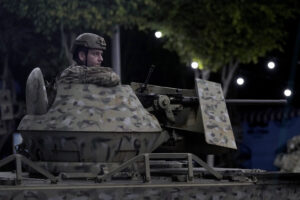

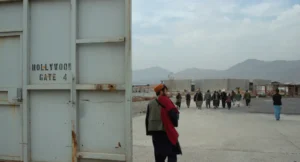
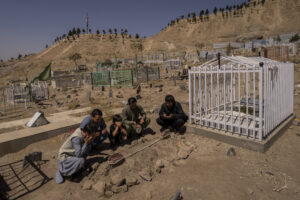
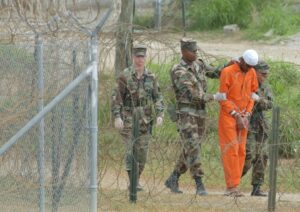



You need to be a supporter to comment.
There are currently no responses to this article.
Be the first to respond.